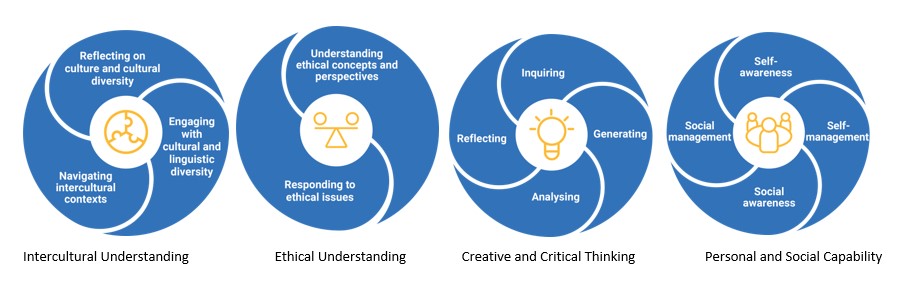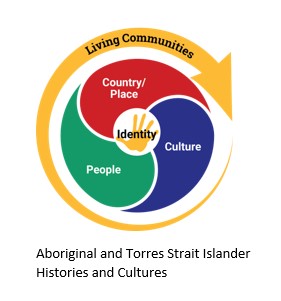Year 9 History – Making a Nation (CC BY)
Subject overview
This unit provides opportunities for students to develop historical understandings focused on evidence, continuity and change, cause and effect, perspectives, empathy, significance, and contestability.
Unit overview
The year 9 curriculum provides a study of history called “Making of the Modern World from 1750 to 1918”. World and Australian history, the analysis and use of sources, and historical interpretation.
Core concepts and ideas
The subject of History in the Humanities and Social Sciences learning area also provides for deeper engagement with abstract thought; students are encouraged to question established conventions, practices and values and consider possible outcomes and consequences of actions using logic. Exploration of social and environmental issues widens to local, national, regional and global contexts and a focus on investigative methods promotes the making and systematic testing of simple hypotheses about phenomena, issues and challenges. As they reflect on their own and others’ actions, values and attitudes, students develop and apply ethical thinking skills to real and proposed decisions and actions.
The content provides opportunities to develop historical understanding through key concepts, including evidence, continuity and change, cause and effect, perspectives, empathy, significance and contestability. These concepts may be investigated within a particular historical context to facilitate an understanding of the past and to provide a focus for historical inquiries.
The history content at this year level involves two strands: historical knowledge and understanding, and historical skills. These strands are interrelated and have been developed to be taught in an integrated way, and in ways that are appropriate to specific local contexts. The order and detail in which they are taught are programming decisions. (Australian Curriculum and Reporting Authority [ACARA], n.d).
Curriculum links
This resource is aligned with Australian Curriculum version 8.4 and Australian Curriculum version 9.0. This resource is aligned with Australian Curriculum Cross-Curriculum Priority: Aboriginal and Torres Strait Islander Histories and Cultures.
Content descriptions
| ACARA | Version 8.4 |
| ACDSEH020 | The extension of settlement, including the effects of contact (intended and unintended) between European settlers in Australia and Aboriginal and Torres Strait Islander Peoples |
| ACDSEH089 | Experiences of non-Europeans in Australia prior to the 1900s (such as the Japanese, Chinese, South Sea Islanders, Afghans) |
| ACDSEH090 | Living and working conditions in Australia around the turn of the twentieth century (that is 1900) |
| ACDSEH091 | Key people, events and ideas in the development of Australian self-government and democracy, including, the role of founders, key features of constitutional development, the importance of British and Western influences in the formation of Australia’s system of government and women’s voting rights |
| ACDSEH092 | Laws made by federal Parliament between 1901-1914 including the Harvester Judgement, pensions, and the Immigration Restriction Act |
| ACARA | Version 9.0 |
| AC9HHK01 | The causes and effects of European imperial expansion and the movement of peoples in the late 18th and early 19th centuries, and the different responses to colonisation and migration |
| AC9HHK02 |
The key social, cultural, economic and political changes and their significance in the development of Australian society during the period
|
| AC9HHK03 | The causes and effects of European contact and extension of settlement, including their impact on the First Nations Peoples of Australia |
| AC9HHK04 |
Significant events, ideas, people, groups and movements in the development of Australian society
|
| AC9HHK05 | Continuities and changes and their effects on ways of life and living conditions, political and legal institutions, and cultural expression around the turn of the 20th century in Australian society |
| AC9HHK06 | Different experiences and perspectives of colonisers, settlers and First Nations Australians and the impact of these experiences on changes to Australian society’s ideas, beliefs and values |
| AC9HHK07 | The development of Australian society in relation to other nations in the world by 1914, including the effects of ideas and movements of people |
General capabilities

Cross-curricular priorities

Teaching Notes
Timing
10 week term- 2 lessons a week
Materials
- Internet connection to view resources
- Printer for class copies of worksheets
- Devices to connect to internet for research
Lesson Plan
Topic |
Lesson Plan |
Resources |
|
Contact and conflict between European settlers and Aboriginal and Torres Strait Islander people as a result of the extent of colonisation. |
Investigation: Settling into Australia through the Blue MountainsDefine:
Discuss:
Activity:
|
National Museum Australia. (n.d). Defining Moments:
National Museum Australia. (n.d). Australia’s Defining
SBS The Feed.(2018). Reconciling Murder: The Myall Creek Massacre. [Video]. YouTube.
|
|
Experiences of non-Europeans in Australia during the nineteenth century |
Investigation: Strangers in a Strange Land (4 lessons) Topic 1: South Sea Islanders Define:
Discuss:
Activity:
Topic 2: Chinese Migrants Define:
Discuss:
Activity:
|
National Museum Australia. (n.d). Defining Moments: Island labourers. https://tinyurl.com/55spjcs9 Victorian Collections.(2017).Victorian Collections. (2017). Many Roads: Stories of the Chinese on the Goldfields of Victoria. [Video]. YouTube. Sydney Living Museums.(n.d). Chinese on the Goldfields. https://tinyurl.com/u69xubzb National Library of Australia.(2019). Australia for the White Man. https://tinyurl.com/5dzaz7uf National Museum of Australia. (2018). Defining Moments: Gold Rush.[Video]. YouTube. https://tinyurl.com/27wmx96k |
|
Living and working conditions in Australia during the nineteenth century |
Investigation: Ordinary Lives “Most people in Australian history have been ordinary people- not famous, not achieving any nation-changing result from their lives, and not remembered in history books.” (National Museum Australia, [NMA], n.d).
Discuss:
Research Project: Individual. Choose a topic from:
Write a diary entry for one of these groups/sufferers of bubonic plague.
|
National Museum Australia. (n.d). Defining Moments: Ordinary Lives. https://tinyurl.com/ybfnwnv5.
National Museum Australia. (n.d). Defining Moments: Bubonic Plague. https://tinyurl.com/fuxpmtjr
National Museum Australia. (n.d). Defining Moments: Victorian Employer’s Union. https://tinyurl.com/3s6a29xn |
|
Key people, events and ideas in the development of Australian democracy |
Investigation: Making a Democracy- Eureka Stockade Students will learn about the impact of the Eureka Stockade on Australian Democracy.
Investigation: Women’s Suffrage
Questions to discuss:
|
The Art Gallery of Ballarat and the Eureka Centre Ballarat. (n.d). Eureka Education Kit. Victorian Government. https://tinyurl.com/28b69fjw National Museum of Australia.(2018). Defining Moments: Eureka Stockade [Video]. YouTube. https://www.youtube.com/watch?v=or5Q3hkztoU Behind the News. Eureka Stockade. (2013). Australian Broadcasting Corporation. https://tinyurl.com/45w9w2yh National Museum of Australia.(2018). Defining Moments: Women’s suffrage [Video]. YouTube. https://www.youtube.com/watch?v=wmj-LKR7HD4
|
|
Major social legislation was made by the federal parliament between 1901 and 1914. |
Investigation: Federation Define:
Discuss:
Activity:
|
Federal Register of Legislation. (1901). Immigration Restriction Act. Australian Government. https://tinyurl.com/3z2xzzxs National Museum of Australia. (2018). Defining Moments: Women’s suffrage. [Video]. YouTube. https://tinyurl.com/2p8pbmbn Parliamentary Education Office. (n.d). Create a new Federation. https://tinyurl.com/yhntc5hd Parliamentary Education Office. (n.d). The Federation of Australia. https://tinyurl.com/2f582ewy Fair Work Commission. (n.d). Harvester case. https://tinyurl.com/yc2276ss |
Assessment
Rationale: The purpose of this assessment is to assess students’ abilities to research, collect, analyse and draw conclusions about historical sources. Students develop a hypothesis or position about the significance of one of these events and develop a written response with appropriate references.
Making a Nation – Research task
Topics may include:
- European Settlement and expansion in Australia and the impact on Indigenous peoples (eg. Myall Creek Massacre).
- The Chinese on the goldfields.
- The Kanakas on the Sugarcane fields.
Assessment example
| Key Inquiry Question |
| To what extent was Pemulwuy successful in resisting the colonisation of Europeans during 1792-1802? |
| Sub Questions |
High Level Student Response:Making a Nation Assessment- Student High Level Response Research Investigation Making a Nation Assessment- Student High Level Response Essay |
TEEL structure
| Topic Sentence (State) | Introduces the main idea of the paragraph and links to the question. |
| Elaboration (Explain) | Subsequent sentence on the main idea. Provide more information about the factor you identified in the topic sentence. |
| Example (How?) | Provide examples and evidence to support your idea/argument. Provide some examples of the contributing factor. Describe your example- how does it link to the topic? You MUST incorporate evidence and refer to sources. |
| Link (Reinforce) | Link the elaboration, evidence, and analysis back to the topic sentence/question. Sum up the main ideas of the paragraph. |

